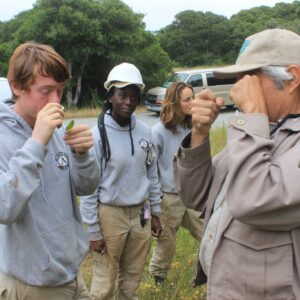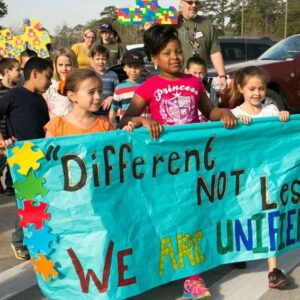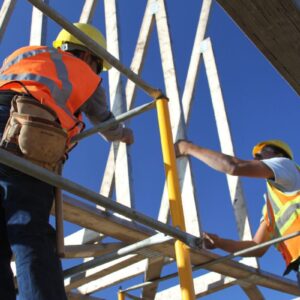
This article is the second in an NPQ series titled The New Asian Diaspora Media: Defending Democracy Locally and Globally. Co-produced with Kavitha Rajagopalan, who directs a program on community journalism at the City University of New York (CUNY), this series highlights stories of how different Asian American communities are using grassroots digital media to meet their communities’ need for trustworthy in-language information amid a media environment distorted by rampant disinformation.
The Nepali community in the United States is experiencing remarkable growth. According to the US Census Bureau, between 2010 and 2020 the population of people identifying as Nepali alone increased 295.5 percent—a nearly fourfold climb—while the population of people identifying as Nepali in any combination with other races and ethnicities grew by 269 percent.
These numbers make the US Nepali population the fastest-growing group listing a sole Asian ethnicity among any group with 50,000 or more residents as of 2010. By 2023, census estimates indicated approximately 225,000 people in the United States identified as Nepali.
This growth is driven by political instability in Nepal, including a civil war that ended in 2006; unemployment; low income; lack of quality education; poor quality of life; and increasing climate challenges, such as frequent earthquakes and floods, which have displaced many and prompted emigration.
In 2012, the publication Khasokhas was formed to provide this Nepali community with in-language information; at the time I founded the publication, there were no Nepali language news sources in New York City. It has since grown to become a critical community resource.
Mapping the US Nepali Community
While US Census data indicated that the Nepali community is growing rapidly, this data may understate the rate of growth.
According to Department of Homeland Security (DHS) data, for example, over 200,000 Nepalis have obtained green cards, with over 55,000 through the Diversity Visa (DV) lottery and over 50,000 through asylum.
Furthermore, various sources estimate the Nepali-speaking population in the United States is around 500,000, including approximately 85,000 Nepali-speaking Bhutanese who entered the country from Nepal through a refugee program. This broader estimate includes individuals on student visas, asylum seekers entering without visas via Mexico, those on H-1B and other work visas, individuals covered by Temporary Protected Status (TPS), and a number of undocumented individuals who have remained in the United States despite final deportation orders.
Of the over 200,000 Nepali green card holders, nearly 87,000 have already acquired US citizenship, according to DHS data. Including second-generation individuals, the total number of US citizens of Nepali origin is approximately 100,000.
As of February 2025, 16,933 Nepali students were reportedly enrolled in US educational institutions, mostly on F-1 visas. In 2024, there were a record 32,788 active F-1 and M-1 student visa records for Nepali students, making Nepal the seventh-largest source of foreign students in the United States. These students are increasingly anxious due to policies initiated by the administration of President Donald Trump that are targeting international students, including recent visa revocations for over 100 Nepali students.
The Nepali immigrant community in the United States faces challenges in accessing accurate information, particularly regarding immigration law.
There are more layers of complexity. According to a Congressional report, 7,505 Nepalis held TPS, granted after the 2015 earthquake, which was set to expire on June 24, 2025. The Trump administration terminated TPS for Nepal effective August 5, 2025. About 1,500 of these TPS holders had existing deportation orders but had been shielded; however, that protection ended as of August 20, 2025. The termination of TPS now puts them at risk of removal or forces them to seek alternative legal pathways.
During the administration of President Joe Biden, nearly 9,000 Nepalis entered the United States without visas by crossing the US–Mexico border, with about 2,800 entering ICE custody. Additionally, an estimated 10,000 Nepalis live in the United States on other nonimmigrant visas (such as H-1B, J-1, L-1) or as dependents.
Many others lack formal legal status, having overstayed visas or entered without inspection. Some are awaiting family- or employment-based green cards. This diverse group faces heightened fears of mass deportation under the Trump administration.
Bridging the Information Gap
Serving this community is Khasokhas, serving as a vital in-language resource center on topics such as immigration, housing, healthcare, elections, and taxes.
The Nepali immigrant community in the United States faces challenges in accessing accurate information in their native language, particularly regarding immigration law. According to Pew Research data released this year, approximately 40 percent of Nepalis in the United States lack English proficiency. This number marks an improvement from the 49 percent figure that Pew had reported in 2019, but still presents significant challenges for the community.
Given the extremely limited availability of government resources in Nepali and the difficulty even for those with basic English skills to comprehend legal terminology, Khasokhas helps bridge this information gap.
During the COVID-19 pandemic, Khasokhas established a coronavirus resource center to provide the Nepali community with vital information on vaccines, unemployment insurance, loans, relief programs, and business resources.
Since then, this center has transformed into a comprehensive resource hub—offering information on immigration, healthcare, housing, and taxes. The resource center’s importance and necessity within the Nepali community have significantly increased due to the rapid changes in immigration policies under the current Trump administration.
Currently, rumors about immigration policies are spreading, causing fear within the Nepali community. Khasokhas is actively working to debunk these rumors through its fact-checking efforts, and readers count on the publication to stay informed.
For example, in early 2025, a rumor spread on social media among Nepali immigrants that the Trump administration had terminated Temporary Protected Status (TPS) for Nepali nationals, leading to fears of immediate mass deportation.
Khasokhas learned of this misinformation directly from community members seeking clarification and responded swiftly by publishing a fact-checked article in Nepali, clearly stating that TPS for Nepalis had not been terminated at that time and that TPS holders were not at risk of mass deportation.
One of the most significant initiatives Khasokhas has undertaken…is the strategic use of vertical video storytelling across social media platforms.
To further address community concerns, Khasokhas hosted a live video session with an immigration attorney—providing a platform for questions, exploring legal avenues, and discussing available options for TPS holders. This rapid and comprehensive intervention successfully calmed fears and equipped community members with accurate, empowering information.
Around the same time, a misleading video of Trump went viral, falsely claiming the administration had announced the termination of the Diversity Visa (DV) lottery and the deportation of all 55,000 Nepalis who had immigrated through it.
The Khasokhas team discovered this video circulating on social media. It was actually an outdated clip from November 1, 2017, recorded after a truck attack in Manhattan involving a DV lottery recipient from Uzbekistan.
Khasokhas quickly published a Nepali-language article, as well as TikTok and Instagram videos to counter the misinformation. The content clarified the truth of the clip and that the program, having being established by Congress, could not be ended by executive action alone.
Community members are also encouraged to contact Khasokhas directly to request fact-checking if they cannot find the information they need. As a result, the publication’s role in fact-checking for the Nepali immigrant community has continued to grow.
Video Storytelling
One of the most significant initiatives Khasokhas has undertaken in order to increase community engagement, provide accurate information on immigration, and combat misinformation and disinformation is the strategic use of vertical video storytelling across social media platforms, particularly Instagram and TikTok.
This focus is in response to the community’s shifting media consumption habits and a preference for quick, visually engaging content.
[Since] November 2024, Khasokhas has doubled down on storytelling videos to combat misinformation and disinformation.
Last year, Khasokhas launched a daily news update series mostly focusing on immigration issues exclusively through vertical videos, ensuring the audience stayed informed in a fast and digestible manner. Within a year, its TikTok videos alone garnered over 32 million views, while Facebook and Instagram Reels received 20 million views—totaling more than 52 million views from vertical videos. This demonstrates the massive reach and engagement potential of this format.
Khasokhas has also been presenting live interviews with experts on topics such as immigration and taxes, where readers can ask questions live, either anonymously or not.
To address heightened fears of ICE enforcement, for example, in 2025 Khasokhas is conducting regular live video sessions with immigration attorneys. This includes a recent “Know Your Rights” live video session, which educated the Nepali community about their rights in cases of ICE agent encounters, arrests, or detention. These regular live video sessions with immigration attorneys, conducted in Nepali, not only cover the latest immigration updates, their realities, and impacts, but also allow viewers to ask direct questions. Key clips from these sessions are published on TikTok and Instagram Reels, amplifying their reach.
Supporting the Community into the Future
Following the US presidential election in November 2024, Khasokhas has doubled down on storytelling videos to combat misinformation and disinformation precisely where misleading narratives are spreading—using the same format to counter falsehoods with verified, fact-based information.
But Khasokhas has been an indispensable resource for the Nepali community in the United States far longer than the most recent election. In 2018, during Trump’s first term, the administration’s decision to terminate TPS for Nepal created widespread uncertainty for approximately 15,000 Nepali TPS holders. Consistent reporting by Khasokhas helped TPS holders to challenge the decision in court, leading to a ruling that protected thousands of Nepali TPS holders from deportation.
Additionally, Khasokhas continues to provide ongoing updates on TPS renewals, status adjustments, and pathways to employment- or family-based green cards through detailed reports, video sessions, and resource centers. These efforts have enabled many Nepalis to renew their TPS on time and opened pathways for some to transition from TPS to permanent residency. More broadly, Khasokhas, by providing critical information in Nepali, has helped many in the Nepali community avoid legal troubles and reduced their need to pay for basic immigration information from attorneys.
Key throughout has been the adoption of a comprehensive approach to informing the Nepali community. This reporting work includes daily news updates, fact-checking initiatives, live interviews, community events, and timely vertical video content. All told, through a media strategy that combines text stories with the savvy use of short-form video, day-in-day-out Khasokhas mitigates the impact of misinformation within the Nepali community, while empowering its Nepali audience to make informed decisions.














